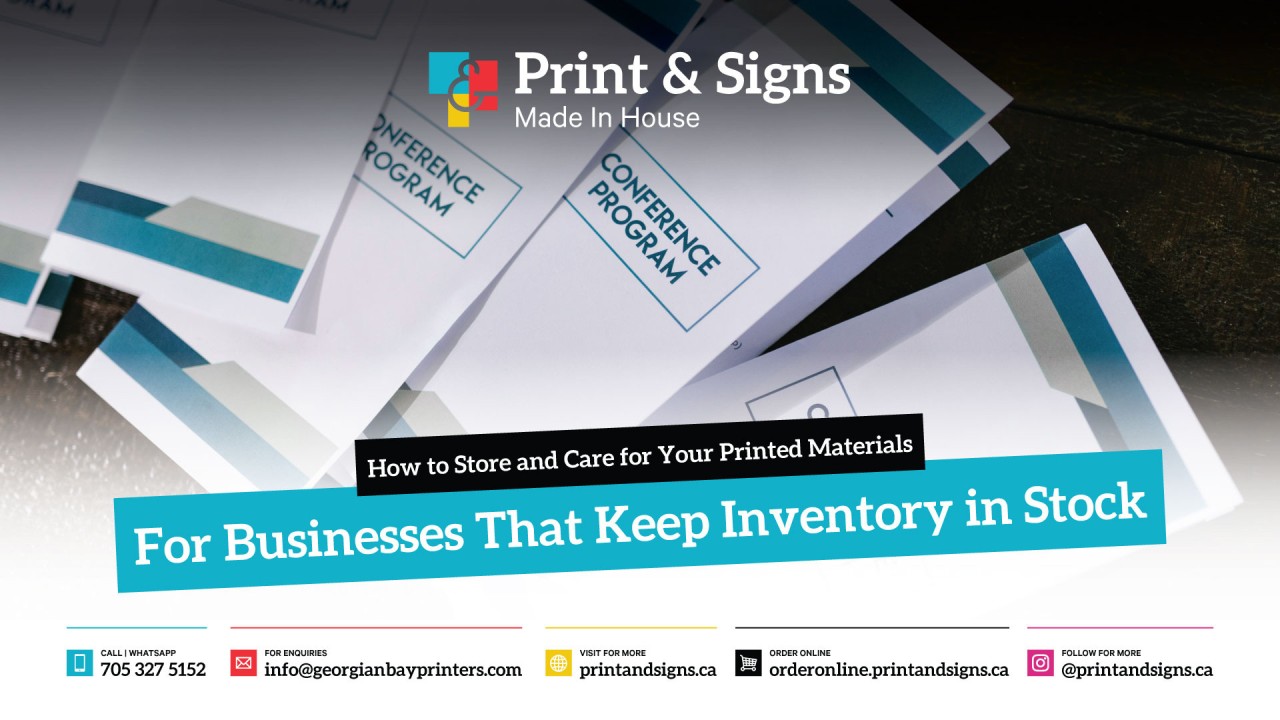
Printed materials are a valuable part of many businesses, whether they are brochures, flyers, packaging inserts, or promotional displays. While companies often invest heavily in design and production, proper storage and handling are just as important.
If your business keeps printed stock on hand, here are some practical ways to protect your investment and keep materials looking professional and ready to use.
Paper is sensitive to moisture and temperature changes. To avoid damage, store your materials in a clean, dry space with stable conditions. The ideal environment is around 18 to 22 degrees Celsius, with relative humidity between 40 and 50 percent.
High humidity can cause paper to curl or stick together
Low humidity can make paper brittle and prone to cracking
Avoid basements, garages, or other areas with poor insulation or airflow.
To keep your materials in good shape, stack them evenly and avoid bending or leaning. Recommended storage methods include:
Plastic bins with lids or acid-free cardboard boxes
Pallets or shelves to keep items off the floor
Dividers between different print types to avoid friction or edge wear
This helps prevent creases, warping, or accidental damage during handling.
Direct sunlight or strong indoor lighting can fade colours and break down ink over time. Keep your printed items away from windows or store them in covered containers or cabinets. If visibility is needed, consider UV-resistant sleeves or storage options.
An organized system saves time and reduces waste. Use clear labelling and inventory tracking to stay in control:
Label each box with product type, quantity, and date of printing
Use spreadsheets or inventory software to track usage and restock needs
Rotate your stock using a first in, first out method to prevent older materials from going unused
When ordering in bulk, ask your print provider about packaging that supports long-term storage. You can request:
Shrink-wrapped bundles to reduce movement
Rigid backings for delicate items
Clear carton labels by product type or region
This ensures your materials arrive organized and ready for storage.
Stocking up on printed materials can help reduce costs and streamline your operations, but only if those materials are kept in good condition. With proper storage and planning, you can extend the life of your print items and ensure they continue to represent your business well.